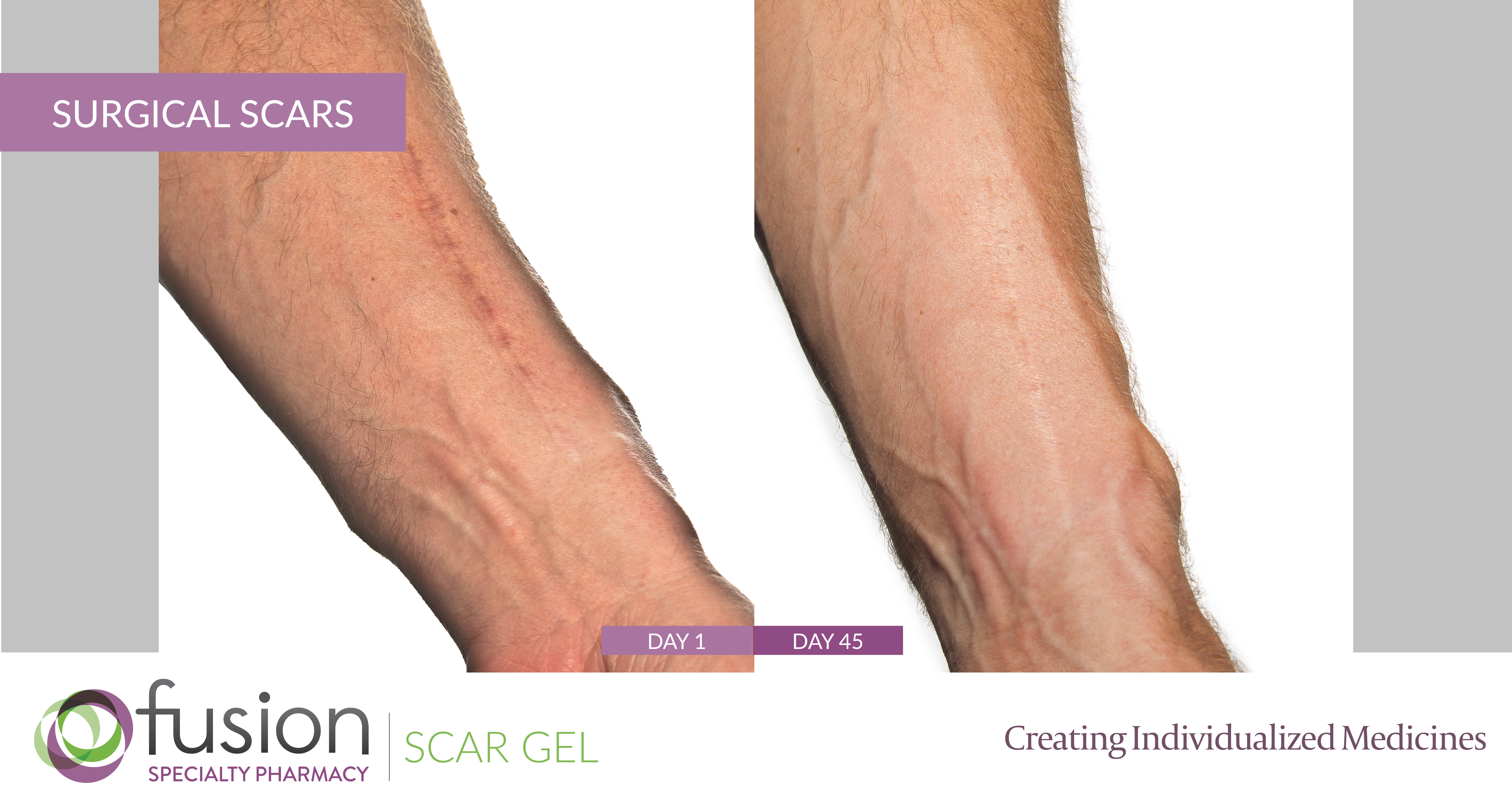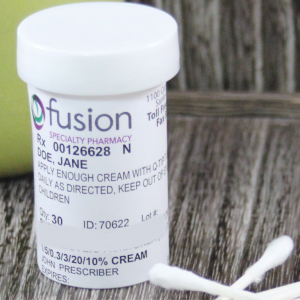SURGICAL SCARS

Get Fusion Specialty Pharmacy’s customized Scar Gel to treat your surgical scar. Our Scar Gel is made with medications to promote healing and decrease discoloration. Because our scar gel requires a prescription, we are happy to contact your provider directly.
A surgical scar is one that usually forms after a surgical procedure. Whether it is an elective surgery or a medical emergency, anytime your skin is cut or injured there is a chance that scarring may occur. For scheduled surgeries, it is good to plan ahead to deal with the scar that will follow. Fusion Specialty Pharmacy’s compounding pharmacists can help you with a customized scar formula that may prevent the formation of scarring and improve healing of the incision before scar tissue forms.
TYPICAL SURGICAL SCAR TREATMENT
- Topical ointments
HOW DOES FUSION SPECIALTY PHARMACY’S SCAR GEL WORK?
When applied directly to the incision, Fusion Specialty Pharmacy’s specialized formula will help treat inflammation and discoloration. Surgical scars may be reduced and soften in appearance and texture.
RELATED PRODUCTS
additional information
Does Fusion Specialty Pharmacy have medication for preventing a post-surgical infection?
YES! We can contact your provider with an entire surgical care kit! All you have to do is give us their contact information, and we’ll handle the rest.
When is the best time to use Fusion Scar Gel after a surgery?
We recommend using Fusion Scar Gel after a surgery only if there are no visible signs of infection or other complications resulting in an open wound.
If you are still not sure that your incision area is ready, please call our pharmacy. Our pharmacists are always happy to assist patients in determining this as well.
RELATED ARTICLES
Infant Severely Scaled On The Face
SUMMARY: A 5-month-old infant was severely scalded with a liquid on the face resulting in a major second-degree burn. Following the incident, PracaSil-Plus was advised to be applied twice daily, in addition to a sterile bacitracin ointment. After eight days, there was a considerable progress of the infant’s facial burn, as shown in the figures below.






